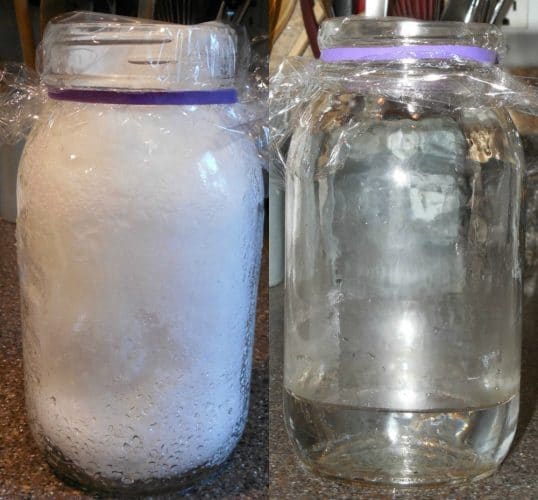3 Easy Investigations to Explore Snow!
When the weather gets cold and the snowflakes start to fly, you can either grumble about it or take the opportunity to learn and have fun in the white stuff! I might be guilty of both, but I can appreciate the beauty and interesting science of snow. In fact, some of my favorite science lessons from teaching elementary students were during the snowy winter season.
Snow is fascinating, kids love it, and it is easy to study. Here are 3 little-to-no-prep science activities to try during that first snowfall (or whenever you are cooped up on a snow day later in the winter).
What Is in Snow?
You may have fond memories of catching snowflakes on your tongue or pouring maple syrup over a natural snow cone. OR you may be like me and cringe whenever you see a kid shoving some into his or her mouth because you know too much about what is in that pristine-looking snow! Either way, you and your kids will learn a lot from this super easy investigation that answers not only one, but two science questions.
To investigate these questions:
1. What is in snow besides water?
2. How much liquid water is in snow?
All you need is:
- a clean jar or glass
- plastic wrap
- rubber band
- a white sheet of paper
This one is soooo simple to set up! Fill up the jar or glass with some snow. Note the height of the snow in the glass. Allow the snow to melt.
When you check the snow jar, first note the level of water in the jar. How is it different that then level of snow? What does this tell us about the actual amount of water in snow?
Next, take the plastic wrap off of the jar and place the jar on top of the white paper. Look down into the jar. What is floating in the water? How does this differ depending on where you collect your snow and how old the snow is?
You can extend this experiment further by looking at the particles in the water with a large magnifying glass or with a magnifying lens attachment for a cell phone like this one. (I like to use the cell phone attachment because you can also take a picture of what you see!)
Why is there so much stuff in snow, even if it is fresh? Every snowflake begins when water molecules come into contact with dust or pollen high in the atmosphere. So, long before the snowflake even gets exposed to the dust and pollution close to Earth’s surface, it has at least a particle of dust or pollen in it already.
Explore the pH Level of Snow
Another easy science investigation is measuring the pH level, or how acidic or basic, melted snow is. You can get inexpensive pH test strips to quickly and easily test the snow-melt water and any other liquid you are curious about.
Regular drinking water has a pH level of around 7, which is neutral on the pH scale. Clean precipitation is usually between 5 and 6. If you live in an area where there is a lot of air pollution, or close to places with factories, you may find that you have acid precipitation. This will have a pH level between 4 and 5. This lesson really shows that the saying, “What goes up must come down!” is true even when it comes to the things humans put in the air. You can find more information on acid precipitation on the EPA’s website.
Catch a Snowflake
Snowflakes are beautiful but fleeting! One easy way to catch a glimpse of their unique shapes and symmetrical sides is to get outside with a piece of black construction paper as the snow is just beginning to fall. Hold the paper flat so that the snowflakes land on it. If they are light, fluffy flakes, you should be able to see their intricate designs. Just don’t lean in too close! Even a quick shot of warm breath will make them disappear!
An excellent companion book to this activity is Snowflake Bentley by Jacqueline Briggs Martin. This is the story of the father of snowflake photography. He was the first to capture the distinct designs and symmetry in beautiful snowflakes.
No matter whether it snows only once or twice a year in your area or whether you get snow all winter long, these snow-related science experiments are a fun way to learn more about snow. Spend some time this winter doing these fun STEM experiments and learning more about snow. After all, you might as well do what you can to enjoy it whether snow is something you look forward to or something you’d rather not see at all!
For more fun snow-related science activities, take a look at The Science of Snow!











